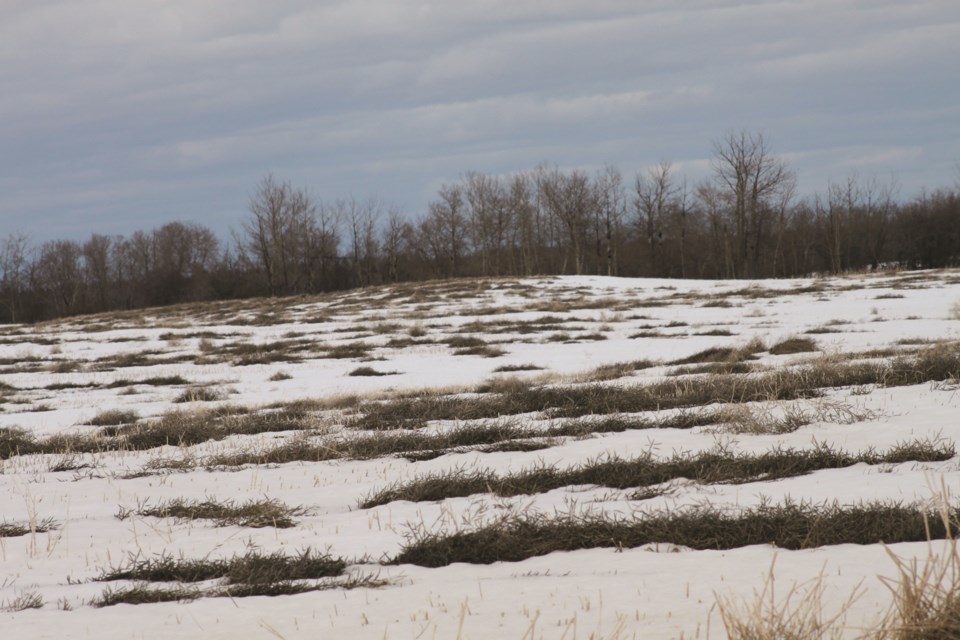ST. PAUL - While agriculture has been declared an essential service in Canada, Alberta farmers are heading into a delayed spring seeding season with as much as 20 per cent of last year’s crop on the ground that still needs to be dealt with.
The situation is dire enough on the local front that the County of St. Paul council has penned a letter to Alberta Agriculture and Forestry Minister Devin Dreeshen calling on the province to provide an economic response plan for the province’s agricultural sector.
“Over the past two years, a confluence of circumstances including trade disputes, transportation disruptions, the introduction of the carbon tax, low exchange rates, weather conditions, and now a global pandemic have left the agriculture industry deeply overwhelmed and without many instruments to alleviate the burden mounting on its collective operations,” reads the letter signed by Reeve Steve Upham.
Cold temperatures and snow through March and into April erased any chance for an early spring in the region, something many local grain farmers were hoping for in order to complete last fall’s harvest.
Rain, cool temperatures and then untimely snow wreaked havoc with the 2019 season. The sun would come out for a day or two and just when it looked like combines could start rolling again, the weather would again take a turn for the worse.
By December, provincial crop reports for the northeast region indicated at least three per cent of the crop was still standing and another 10 per cent, or in some instances as much as 20 per cent, was lying in swaths covered by snow. However, in mid November, estimates in the County of St. Paul had as much as 35 per cent of the crop still in the field. In this region, canola and oats were particularly hard hit.
By the end of November, the County of St. Paul had declared an agricultural disaster for the area, the second one in two years having also declared an agricultural crisis in early 2017 following a 2016 harvest when unseasonable weather brought an abrupt stop to that year’s combining.
Agriculture Financial Services Corporation (AFSC) estimates over one million insured acres remained in Alberta fields when all was said and done in 2019. AFSC moved to extend crop insurance past the November 30, 2019 deadline to when the crop can actually be harvested, or barring that when the unharvested acres are released after inspection or to June 15, 2020, whichever occurs first.
“There will be regions in the province where spring combining is not an option. If this is the case, producers will need to contact their AFSC branch office to set up a pre-harvest inspection, so that the yield can be assessed on these crops and used in the final settlement of their claim,” according to an AFSC statement.
However, not all farmers carry crop insurance. And, even with insurance, the county letter to the minister states that crop insurance “has proven to be inadequate for snowed-under crops as demonstrated by the many unharvested acres in Alberta over the past two years.”
The county is calling for, at the very least, to see the Canada Emergency Response Benefit offer up something for the agriculture industry.
“At a minimum, County Council strongly believes that this program needs to be expanded or a similar program needs to be created to support agricultural producers and businesses. An injection of cash into the agriculture industry will be vital for weathering the economic shocks caused by this pandemic.”



